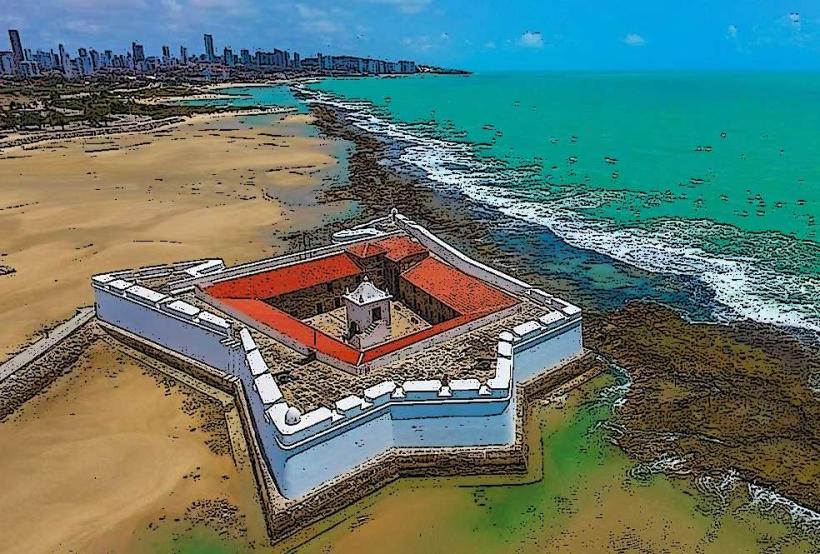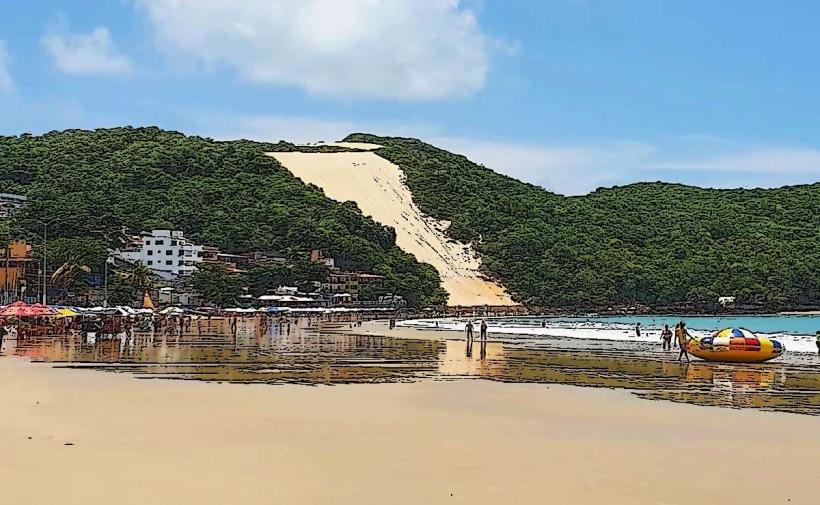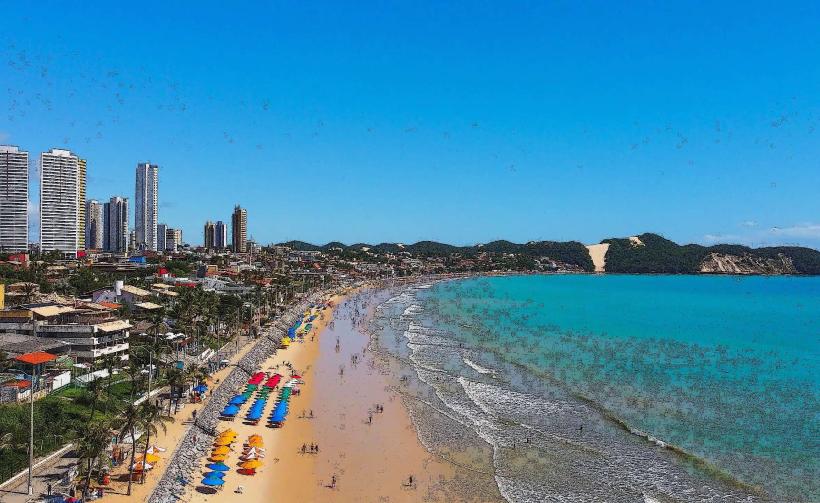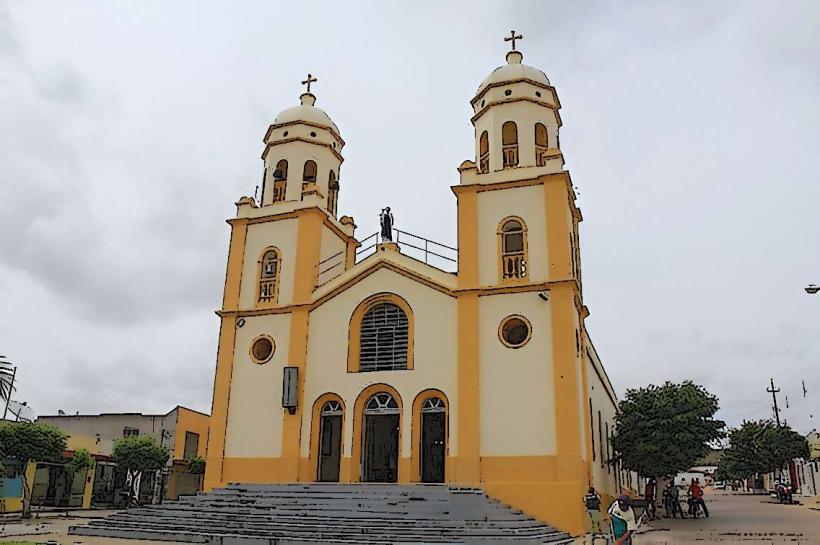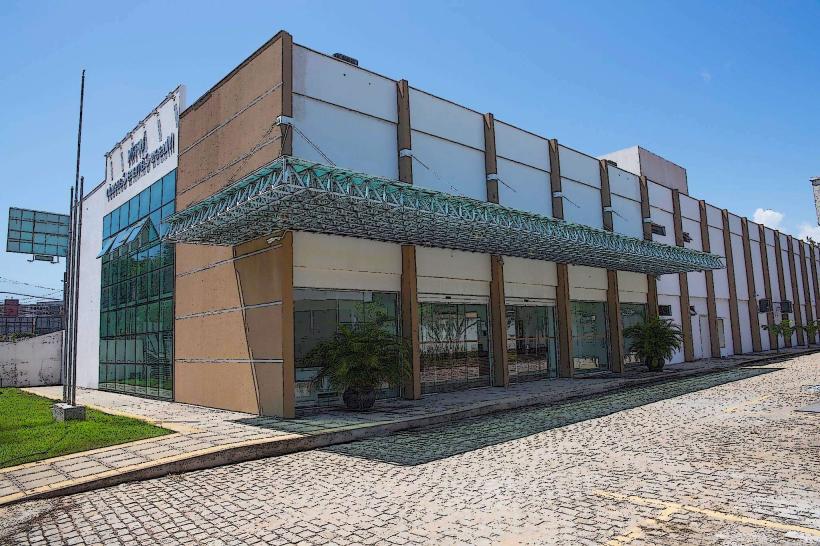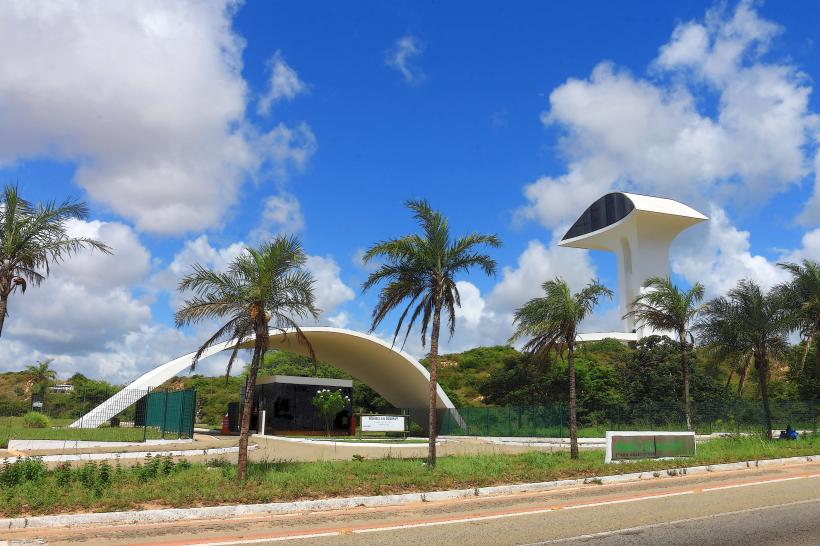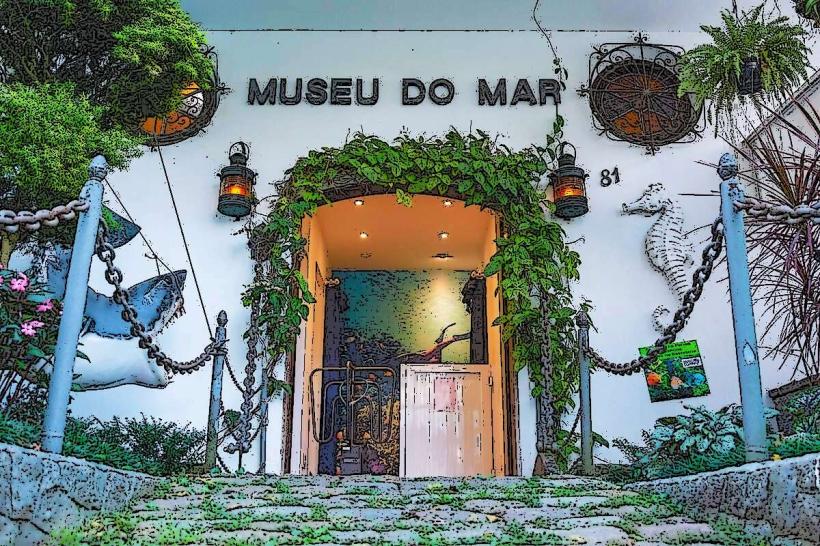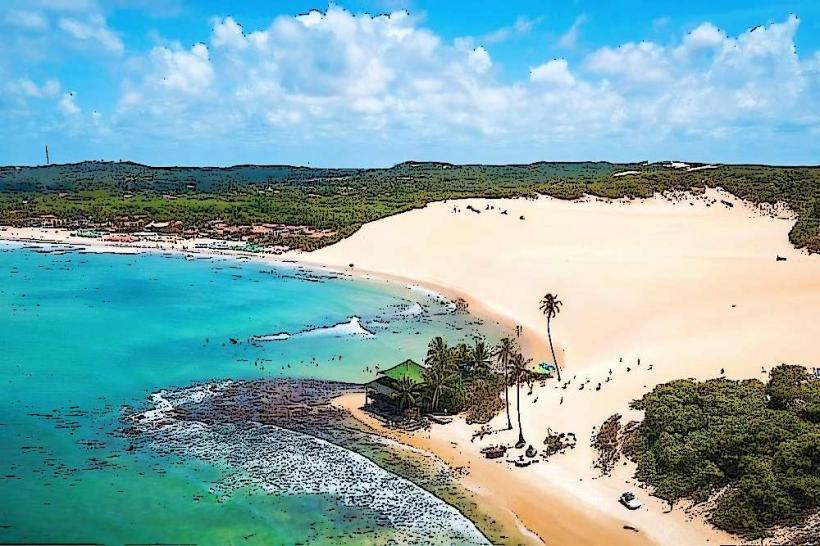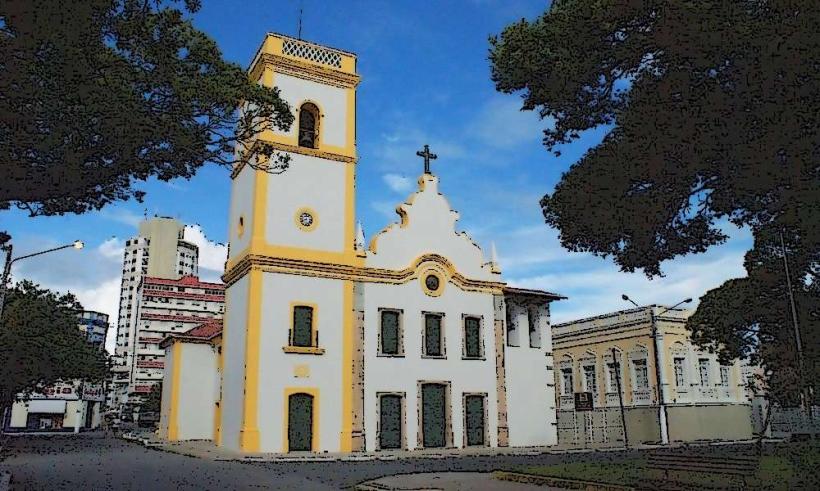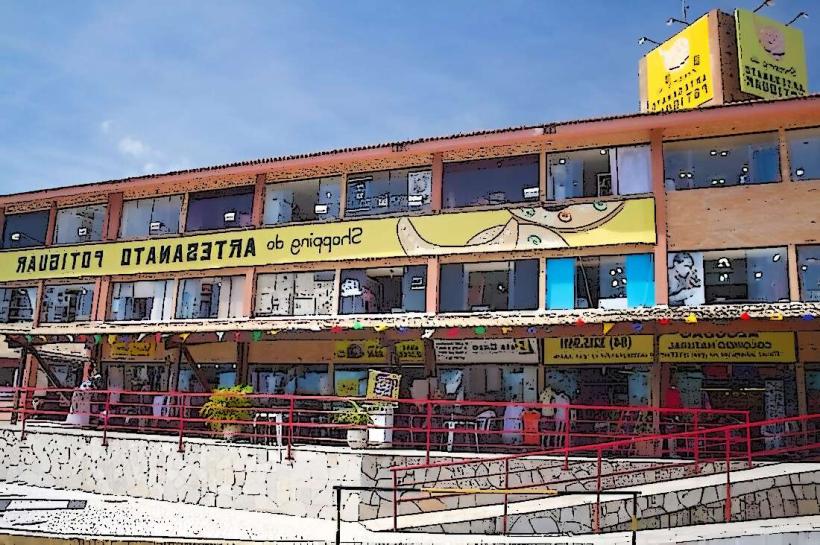Information
City: NatalCountry: Brazil
Continent: South America
Natal, Brazil, South America
Overview
Natal, the capital of Rio Grande do Norte in Brazil’s northeast, offers golden beaches, a vibrant cultural scene, and a history you can feel in its cobblestone streets.Perched near the Atlantic Ocean, it’s known as the “City of the Sun” for its steady warmth and skies that stay bright from morning to dusk.Let’s look past Natal’s famous landmarks and into the people who live there: about 1.4 million call the metro area home, with roughly 900,000 packed into the city itself, from the bustling markets downtown to the quiet, sunlit streets by the coast.Natal’s people reflect a rich blend of cultures, from indigenous roots to European influences and African traditions, like the scent of spice drifting from a busy street market.The city also draws many migrants from across Brazil, especially from the bustling streets of the southeast and the sunbaked towns of the northeast.Immigration: Natal has long drawn people from abroad, especially Europe and Latin America, and today it’s home to a small community of Portuguese, Spanish, and Italian descendants, a legacy shaped by its colonial past and its breezy, salt-scented shoreline.In Natal, tourism, services, commerce, and light industry keep the economy humming, drawing visitors to its sunlit beaches and making the city a key regional hub in northeastern Brazil.Tourism plays a vital role in the city’s economy, from bustling street markets to crowded museums.Natal draws visitors all year, luring them with beaches like Ponta Negra’s golden stretch, the rolling dunes of Genipabu, and the towering Morro do Careca.Ecotourism’s a big attraction too, pulling visitors to wander the golden dunes, paddle through quiet lagoons, and explore the surrounding natural parks.Cultural tourism tied to historic landmarks and lively festivals also plays a vital role, drawing visitors eager to hear old stories and music in the air.Commerce and services keep the city thriving, with bustling malls, busy banks, well-equipped hospitals, and schools that draw families-all making a big impact on the local economy.The service industry serves both local residents and the rising tide of tourists, while shopfronts keep multiplying along the city’s busy streets.Agribusiness plays a big role in Natal’s economy, fueled by Rio Grande do Norte’s farms and fisheries, from boats unloading fresh shrimp at the docks to orchards heavy with tropical fruit and a thriving agro-industry.In the state, people make their living from cashew nuts, sweet golden mangoes, and raising cattle.In Natal, light industry and manufacturing take a back seat in the economy, yet the city still turns out textiles, clothing, chemicals, and electronics-everything from crisp cotton shirts to circuit boards.Natal’s easy to reach-whether you’re driving in, flying over its bright coastline, or sailing into port-making it a strategic hub in northeastern Brazil.Air travel in the city centers on Aluízio Alves International Airport (NAT), the main gateway where you can catch everything from a quick hop to São Paulo to long-haul flights overseas.It links Natal with Brazil’s biggest cities and reaches beyond the country to destinations abroad, especially in Europe and across Latin America, from Lisbon’s cobbled streets to Buenos Aires’ bustling cafés.Public transportation in the city runs on a wide-reaching bus network, with routes winding through quiet neighborhood streets and stretching far into the metro area.Still, people often complain that the buses crawl along and the whole system feels stuck decades behind.Natal’s roads tie it closely to other northeastern cities, with highways like BR-101 running toward Recife and Fortaleza, a stretch busy with tour buses and trucks hauling goods.Natal also makes good use of its port, Porto de Natal, where cranes clank over stacks of crates, though most of the traffic stays local or regional instead of heading overseas.Sea access comes through Porto de Natal, where cranes unload cargo and cruise ships ease into the harbor.It’s not a major international port, but it’s become a stop for the growing cruise tourism market, greeting ships whose passengers spill onto the streets to explore the city and the hills beyond.Natal’s housing market has grown steadily in recent years, fueled by a rising population, thriving tourism, and a stronger economy that’s bringing cranes and fresh paint to city streets.Urban development is seeing rising demand for homes and business spaces, from high-rise apartments to bustling street-level shops.In neighborhoods like Ponta Negra, Lagoa Nova, and Alecrim, real estate has been booming, with cranes lifting steel beams for new apartment towers, sleek condominiums, and bustling commercial complexes.Affordable housing has been a struggle in Natal, where many low-income families crowd into informal settlements of tin roofs and narrow dirt lanes.The city’s tried to tackle these problems through social housing programs, adding new units and support services, but there’s still a long way to go to make housing truly accessible for everyone.Luxury Developments: With tourism on the rise, more people are eyeing upscale homes, especially those just steps from the sand.Luxury apartments and condos with sweeping sea views are hot right now, drawing in wealthy locals and overseas buyers alike.Culture and Arts Natal draws from a deep well of history, shaped by indigenous traditions, African rhythms, and the legacy of Portuguese colonists.All year long, the city buzzes with festivals and cultural events, from lively street parades to open-air concerts under strings of glowing lights.Music: The city pulses with a lively music scene, where forró, samba, MPB, and funk spill from bars and street corners alike.In Natal, Carnival bursts to life with colorful street parades, lively blocos weaving through the crowd, and samba schools pounding out rhythms you can feel in your chest.The Festival de Forró also honors the region’s musical roots, from the quick snap of a zabumba drum to the sway of an accordion’s warm notes.In Natal, you can catch regional plays, lively dance shows, and big-name productions at venues like Teatro Alberto Maranhão or the elegant Teatro Riachuelo.Visual Arts: The city’s art scene is on the rise, with local galleries and museums like the Museu Câmara Cascudo and the Museu de Arte Popular, where bright canvases catch the light.These venues feature regional art, especially pieces steeped in nordestino culture and folklore, like bright hand-painted tiles of fishermen at sea.In Natal, traditions come alive during festivals like the Festa de Nossa Senhora da Apresentação in November, a solemn religious gathering, and the lively June Festa Junina, where Saint John’s Day is marked with bright costumes, quick-stepping dances, and the smell of sweet corn cakes in the air.In northeastern Brazil, Natal stands out as a major hub for learning, home to universities and technical schools-some public, others private-where students fill bright classrooms with the scent of fresh chalk.The Federal University of Rio Grande do Norte (UFRN) stands as one of the city’s key institutions, offering programs that span engineering, medicine, social sciences, and the humanities-where you might find students bent over lab benches or debating theories in crowded lecture halls.UFRN is also recognized for its work in oceanography and sustainable development, from studying deep-sea currents to exploring ways to protect coastal ecosystems.Other well-known schools include Universidade Potiguar (UnP) and Faculdade de Natal (FAL), whose bright yellow campus walls stand out in the afternoon sun.In Natal, several private schools offer international curriculums in English and other languages, welcoming expatriates and families looking for alternative education-some even have bright, airy classrooms filled with maps from around the world.Public Education: Like many Brazilian cities, Natal struggles with its schools-cracked walls, undertrained teachers, and other persistent challenges.
Landmarks in natal

